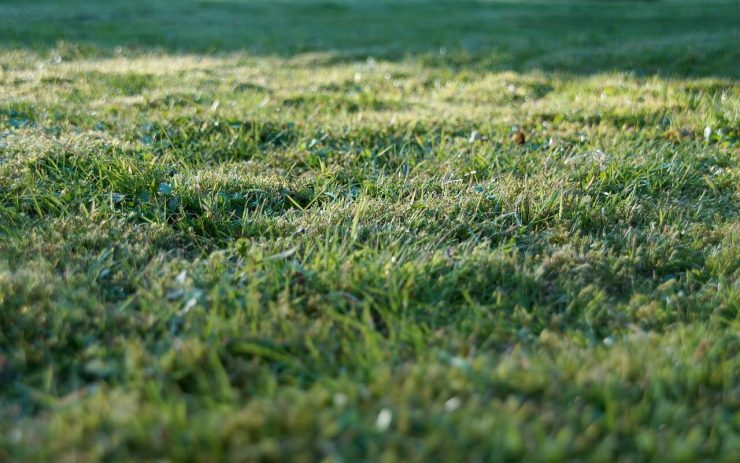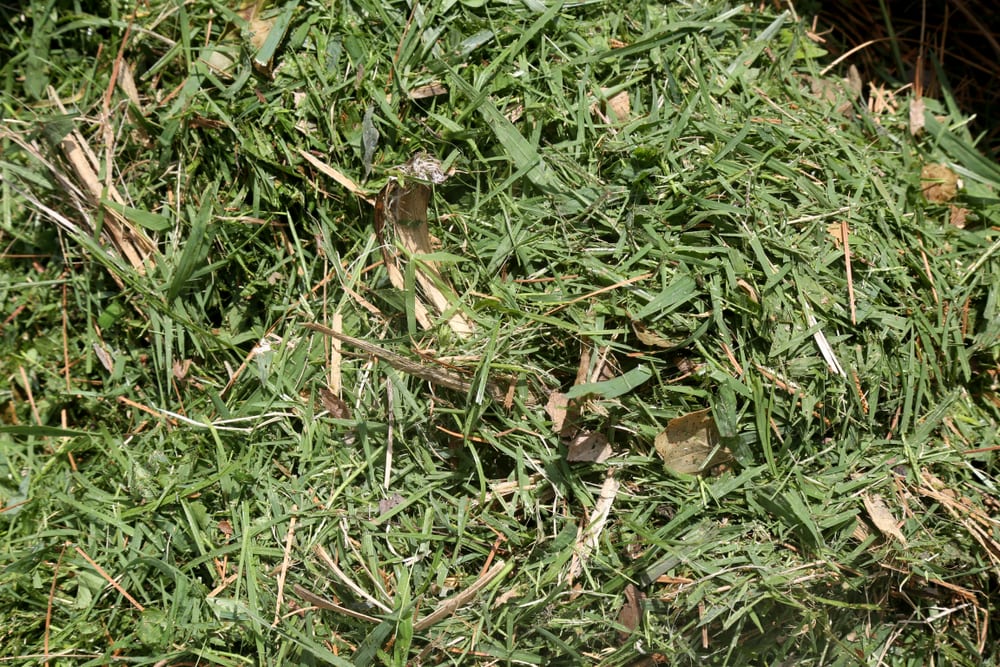Featured
Table of Contents
Discover More About Fruit
Individuals worried about appearance can opt for a mulching lawn mower, he suggested, as those cut grass carefully. Still, lawn cut with a rotary lawn mower will not remain for long."Turf clippings are made from extremely soft tissue that decays rapidly," Mann said. While letting yard clippings lie is best, there are two reasons you might want to recover them.
Second, never ever let grass clippings blow into roads or walkways, due to the fact that healthy or not the lawn blades high in nutrients can trigger problems for sewers and waterways. Here are a couple of other ideas for trimming your yard the best way: "The sharpness of the blade is paramount," Mann said. Individuals trimming with a dull blade are shredding their lawn rather of effectively cutting it, which leaves area for fungis to attack.
Sometimes, it can cause yard to pass away. Changing the lawn mower blade or sharpening it as soon as a year can prevent that. Most lawn ranges across the country flourish at 2.5 to 3 inches, however some, such as those in Florida, may like to be cut shorter or taller, Mann stated. If you're uncertain of for how long to leave your lawn, speak with a landscape professional about what ranges of turf are growing in your yard.
This details was compiled by Anoka County. For extra recyclers in your location, search online. Any recycler wishing to be added to this list might contact recycle@co.anoka.mn.us!.?.!. The info offered in this directory is compiled as a service to citizens. A listing in this directory site does not suggest endorsement or approval by Anoka County.
My kid has been trying to construct of three big stacks of lawn consisted of by plastic fencing. With all the rain we've had, the stacks have actually ended up being damp, compacted, dense and extremely heavy. What can be done to make these piles more reliable at breaking down? They have actually been turned, however we recently included a great deal of grassand that plus the rain has actually made things a compressed mess.
That should be really great for the garden ... no?-- Elizabeth in North Plainfield, New Jersey "No" is appropriate, Elizabeth. 'Green manure' is a crop that you grow to plow into the ground as living fertilizer. What your child has is just a big green smelly mess. (Actually, THREE huge green smelly messes.) This is a typical mistake for rookie composters, particularly in the summer, when grass clippings are abundant.
Those clippings are REALLY high in Nitrogenabout 10%. That's basically the exact same level you 'd discover in really HOT manures, like bat and bird guano. In the easiest sense, these Nitrogen abundant parts don't end up being the garden compost in a stack; instead they offer food for the billions of little microbes that fuel the procedure of turning the other stuffthe so-called 'dry browns' that ought to comprise at least 80% of a pileinto the garden gold our plants so yearn for.
Discover More About Rose
The benefit of including things like lettuce leaves, apple cores and broccoli stalks to a garden compost stack or is mainly in the calming of your recycling conscience, not in their capability to create high quality garden compost. Now you can utilize clippings to make excellent compost, but to do so you need to mix little amounts of well-shredded lawn clippings in with big amounts of well-shredded leaves.
(The very best compost heap follow the Goldilocks guideline: Not too wet and not too dry. Great deals of airflow too. I understand, Goldilocks didn't mention air flow. However she must have.) Anyhow, the outcome of such an honorable enterprise is the evasive, much popular garden change called "hot garden compost". Garden compost that formulate rapidly with the assistance of a natural source of high Nitrogen is better food for your plants and provides far more life for your soil.
And it's the very best kind for making compost tea. "Cold compost"the stuff that results when you just pile a lot of things up, wish for the finest and really get some finished product after a year or socan be a good plant food and soil improver, but hot garden compost is MUCH much better.

I fear that your big stacks of slimy wet yard clippings will not improve one bit with the passage of time. Simply the opposite in fact. Ah, but your timing is great to get it right, as we are fast approaching fall leaf fall. Let lots of leaves gather on the yard throughout a drought (don't let wet leaves collect), discuss them with a mower, bag up what ought to be a best mixture of great deals of wonderfully shredded leaves and a percentage of well-shredded yard and then empty this mix into a huge wire cage, a slatted wooden bin, a or something else to hold everything in place great and neat.
(Individuals who tell you to 'layer' the components in a compost heap stopped working physics.) Yes, this will just use a little percentage of the clippings generated by the average yard, which's an advantage. Since beyond that fall leaf drop window, you ought to NOT be bagging your turf clippings.
I use "quotes" because there's no 'mulch' of any kind included here. A bad name for an outstanding instrument of sustainability, mulching mowers pulverize clippings into an almost unnoticeable powder that they then return to your yard. A powder that's 10% Nitrogen; about as high a natural number as you can get.
DON'T utilize any clippings from an herbicide-treated lawn in a compost stack. Some of the potent chemicals in usage today can endure even hot composting and might kill any plants that receive the garden compost in the future. Oh, and stop utilizing that poisonous stuff too!!!.
Read More About Tomatoes
The Department of Public Functions supplies core civil services for the security and benefit of the citizens of Dayton. These essential services-- including Civil Engineering, Fleet Management, Parks and Forestry, Street Upkeep, and Waste Collection-- all boost Dayton's lifestyle. Click among the links to the delegated check out featured services provided by Public Works.

What can I say? Turf clippings are important to composting. But you need to discover how to do it properly so both your yard and garden compost bin more than happy! Most house owners quickly recognize that their compost bin or system can not deal with all that turf! The following information will help you to much better understand how to recycle those turf clippings.
So, let's start there. Forget those long-held beliefs that yard clippings left on a lawn smother the grass below or cause thatch. Turf clippings are in fact helpful for the lawn. From now on, do not bag your yard clippings: "turf cycle" them. Grasscycling is a basic, easy chance for every property owner to do something excellent for the environment.
And the very best part is, it takes less energy and time than bagging and dragging that turf to the curb. Like the fellow in the image to the left, you may even take your lawn clippings out for a Sunday bike trip; now that's grasscycling taken to the extreme! Grasscycling, simply put, is the practice of leaving turf clippings on the yard or using them as mulch.
Turf clippings include water-saving mulch and motivate natural soil aeration by earthworms. No bagging or raking the yard (Whew!) Plastic lawn bags do not end up in the garbage dump 50% of your lawn's fertilizer needs are met, so you reduce money and time spent fertilizing Less contaminating: lowers the requirement for fertilizer, pesticides and herbicides Non-thatch causing, therefore making a lawn vigorous and durable Makes you feel excellent and green all over! Yahoozy! Not just does it make looking after your lawn simpler, however grasscycling can also reduce your mowing time by 50% because you don't have to get afterwards.
To grasscycle correctly, cut the turf when it's dry and constantly keep your lawn mower blades sharp. Get rid of no more than 1/3 of the leaf area with each mowing. Trim when the lawn is dry. Utilize a sharp mower blade. A dull mower blade bruises and tears the turf plant, leading to a ragged, tarnished appearance at the leaf pointer.
In the spring, rent an aerator which gets rid of cores of soil from the lawn. This opens the soil and permits greater movement of water, fertilizer, and air by increasing the speed of decomposition of the grass clippings and enhancing deep root development. Water thoroughly when needed. During the driest duration of summer season, lawns need a minimum of one inch of water every five to 6 days.
Read More About Plants
Lawn clippings, being primarily water and extremely abundant in nitrogen, are bothersome in garden compost bins due to the fact that they tend to compact, increasing the possibility of ending up being soggy and producing a strong ammonia-like odor. Follow these pointers for composting this important "green", thereby minimizing odor and matting, and increasing quick decomposition:, intermixed in a 2-to-1 ratio with "brown" products such as dry leaves or plant particles (saving/bagging Fall's leaves is best for Spring/Summer grass composting). That's an average of 7 hours per season. Heck, that's a day at the beach!. No special mower is required. For best results, keep the mower blade sharp and mow just when the turf is dry. When clippings break down, they launch their nutrients back to the lawn. They include nitrogen, potassium and phosphorus, as well as lower amounts of other essential plant nutrients.
There's no polluting run-off, no use of non-renewable resources and no damage to soil organisms or wildlife. The cost of trucking grass clippings to land fill sites comes out of homeowners' taxes. This is a wasteful practice: all those nutrient-rich clippings could be fertilizing individuals's lawns, therefore saving cash on fertilizers and water expenses.
Grasscycling is an accountable environmental practice and a chance for all homeowners to minimize their waste. And the finest part is, it takes less time and energy than bagging and dragging that lawn to the curb. Today, 58 million Americans invest around $30 billion every year to maintain over 23 million acres of lawn.
The very same size plot of land could still have a small yard for leisure, plus produce all of the vegetables required to feed a household of six. The lawns in the United States consume around 270 billion gallons of water a week: enough to water 81 million acres of organic veggies, all summer long.
farmland, or approximately the size of the state of Indiana. Yards use 10 times as numerous chemicals per acre as industrial farmland. These pesticides, fertilizers, and herbicides run off into our groundwater and evaporate into our air, causing widespread contamination and global warming, and considerably increasing our threat of cancer, heart problem, and birth problems.
In reality, lawns utilize more devices, labor, fuel, and farming toxins than commercial farming, making lawns the largest agricultural sector in the United States. But it's not just the property yards that are wasted on yard. There are around 700,000 athletic grounds and 14,500 golf courses in the United States, a number of which used to be fertile, efficient farmland that was lost to designers when the regional markets bottomed out.
To mow properly, a number of problems need to be considered: height, frequency, clipping elimination, and blade sharpness. The chart listed below recognizes the most typical ranges of turfgrass grown in yards, and the height to set your lawn mower. Check out the pointers listed below for additional guidelines. Kentucky Bluegrass 2.5-3.5" 4" Fine/Tall Fescue 2.5-3.5" 4" Seasonal Ryegrass 2.5-3" 4" Bermudagrass.5-1" 2" Zoysia.5-1" 2": Under most circumstances, lawns ought to be mown at 2.5-3-inches.
Latest Posts
Mandevilla (Red) - Plant - Cityunbox
Help Your Mandevilla Through The Cold - Hgtv
Question Becky Can I Keep My Mandevilla Plant Inside For The ...